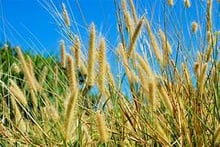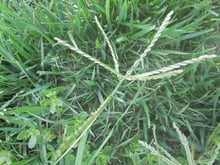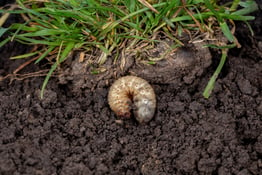Crabgrass: Crabgrass is an annual grassy weed. Of the 3 major annual grasses, i.e. crabgrass, foxtail and goosegrass, it germinates first.

Warm Season Grasses
Southern Region grasses typically go dormant in winter.
Bermuda, San Augustine, Zoysia.
Crabgrass requires several environmental conditions for germination to occur. First, it requires light, next it needs a soil temperature of at least 55oF for 3-5 days, and also requires moisture. Of all of the annual grasses, crabgrass is most affected by a thick actively growing lawn.
 |
 |
 |
| Crabgrass | Foxtail | Goosegrass |
By mowing tall, you prevent light from reaching the soil and the crabgrass seed.
Crabgrass can be controlled chemically either by the use of a pre-emergent chemical, prior to the plant emerging or post-emergently, once it has developed leaves and can be seen above the turf canopy.
Remember, that the best control of crabgrass is a thick actively growing turfFor a pre-emergent to be effective, it needs to be applied to the soil prior to the germination of the seed. Once the crabgrass seed has germinated, the pre-emergent is absorbed by the young plant and either the root, or shoot is prevented from developing and the plant dies. If the seed does not germinate, pre-emergents do not affect it. There are two major pre-emergents available to the turfgrass manager. They are Prodiamine 4L and Dithiopyr. Both of these chemicals provide excellent pre-emergent control of crabgrass, but Dithiopyr will also provide post-emergent control of the young 3-5-leaf crabgrass plant. If the plant gets larger than that, a true post-emergent herbicide such as Quinclorac will be required.

